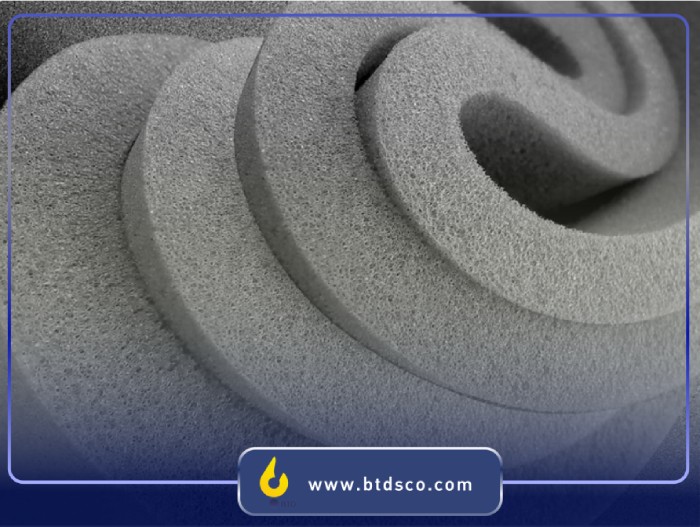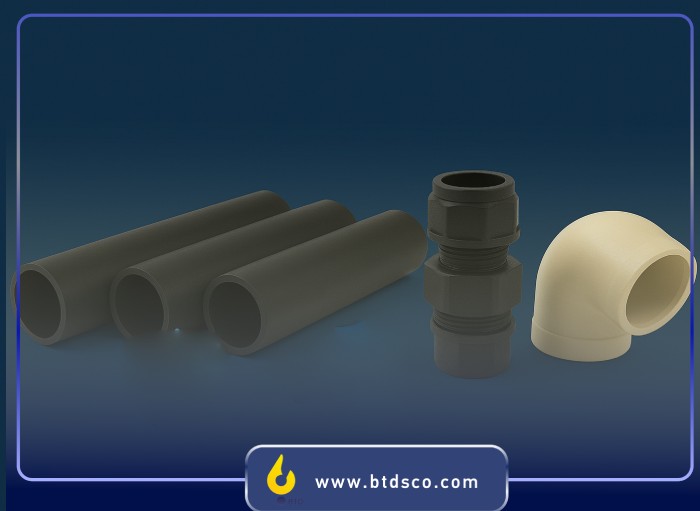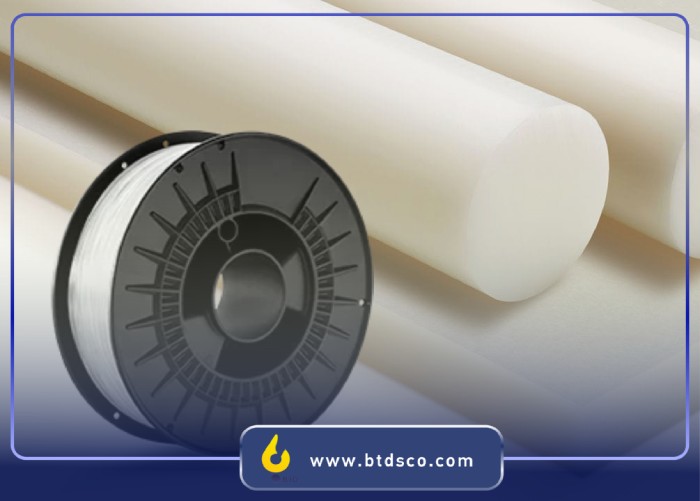Polyamide: A Versatile Polymer for Modern Industrial and Textile Applications

Polyamides are one of the most important and widely used polymer groups in various industries due to their unique characteristics, such as high tensile strength, wear and heat resistance, flexibility, and machinability. These polymers are primarily used in automotive, textiles, packaging, medical, electronics, and many other sectors. Polyamides are mainly divided into two categories: aliphatic and aromatic polyamides, each with specific features and applications. Among them, Polyamide 6 and Polyamide 66 are the most significant types, with notable differences in their chemical structure, physical and mechanical properties, and uses. While Polyamide 6 is widely used in general and economic applications due to its lower cost and easier processing, Polyamide 66 is preferred in specific industries like automotive and mechanical sectors due to its higher resistance, better dimensional stability, and superior performance at high temperatures.
In general, polyamides play a crucial role in advancing many industries, and choosing the appropriate type depends on specific requirements and environmental conditions of the application.
History of Polyamide
The research history of polyamides dates back to 1928 when Carothers began investigating polymerization mechanisms. During this research, the mechanism and process of polyamide polymerization were discovered by chance. After perfecting techniques for producing high-molecular-weight polyamides, attention turned to creating polymers capable of being converted into fibers.
Eventually, Polyamide 66 was chosen for this purpose due to its balanced properties and relative ease in producing raw materials. Gradually, polyamides gained popularity in various industries, especially in the production of consumer fibers such as textiles and carpets. In Europe, about two-thirds of the nylon produced is used for fibers, while the rest is primarily used in injection molding for producing machine parts and consumer goods. A small portion is also produced as films and polyamide threads.
What is Polyamide?
Polyamides, also known as nylons, are a group of synthetic polymers formed by amide bonds between molecular units. Due to their unique properties, such as lightweight, high resistance to wear, heat, and chemicals, as well as flexibility, polyamides have many applications in industries such as textiles, automotive, electronics, and healthcare.
Polyamides are recognized as an ideal choice in producing various products, including fibers, industrial components, and household items, due to their ability to withstand high pressure and temperatures, as well as resistance to corrosion and abrasion.
Types of Polyamide
-
Natural Polyamides
Natural polyamides are organic materials that naturally occur in nature, with molecular structures based on amide chains. These include proteins like silk and wool, which are found in the biological structure of living organisms. Silk is used for its softness and shine, while wool is valued for its insulation properties and resistance to cold.
-
Synthetic Polyamides
Synthetic polyamides are chemically produced and used in many industries. The most important types include nylons (such as Nylon 6 and Nylon 66) and aramids (such as Kevlar). Due to their strength, heat resistance, and flexibility, these materials are vital in manufacturing durable clothing, industrial equipment, and consumer goods. Polyimides are also another type of synthetic polyamide.
-
Aliphatic Polyamides
Aliphatic polyamides consist of chains with repetitive amide bonds and no aromatic rings. These materials, which are semi-crystalline due to their crystalline and amorphous phases, are commercially known as nylon. Common examples include Nylon 6, 66, 11, and 12, which are used in applications such as automotive parts, textiles, and industrial tools due to their suitable mechanical properties, chemical resistance, and flexibility.
-
Aromatic Polyamides
Aromatic polyamides feature structures with benzene rings in between amide chains, which enhance their mechanical and thermal resistance. A prominent example is Kevlar, which is used in advanced industries such as manufacturing bulletproof vests, cable car wires, firefighter helmets, and jet engine housings. These materials have a unique position in advanced technologies due to their extremely high resistance to tearing and impact.
Applications of Polyamides
-
Construction Materials
Polyamides, due to their high mechanical strength, resistance to heat and impact, and light weight, are widely used in the production of sheets and fibers for building components. These materials are used in manufacturing automotive parts, aircraft, and engineering equipment, contributing to the durability and reduced weight of structures.
-
Fabrics and Fibers
Polyamides, such as nylon, are used in the production of various fibers for the fashion and textile industries. These materials are used to create durable fabrics, sportswear, shoes, and threads used in clothing and sports equipment. Their flexibility, resistance to stretching, and high durability make them ideal for these industries.
-
Plastics
Polyamide materials like nylon are used in the production of diverse plastic products such as bags, pipes, bottles, and household items. These products are widely used across different industries due to their strength, resistance to temperature variations, and moisture resistance.
-
Cosmetics and Personal Care
Polyamides are used as primary or strengthening agents in cosmetic and personal care products. They are found in items such as nail polish, hair and skin masks, and other skincare products due to their stabilizing and long-lasting properties.
-
Pharmaceutical Industries
In the pharmaceutical and biotechnology sectors, polyamides serve as intermediary materials for producing drugs and proteins. These materials are essential in pharmaceutical processes and biological research due to their chemical stability and biocompatibility.
-
Packaging and Food Industries
Polyamides play a significant role in food packaging. These materials, with their resistance to moisture and water, help preserve freshness and prevent spoilage, making them popular for packaging food items like meat, dairy, and dry goods.
-
Oral Health Industry
In the field of oral health, polyamides are used to produce dental floss and other health-related products. Their durability, flexibility, and safety help improve the quality of dental care.
What is Polyamide Fabric?
Polyamide fabric is a type of fabric made from polyamide polymer filaments, with nylon being the most famous type. Due to its special characteristics, polyamide fabric is highly popular in the textile industry. Polyamide is a suitable choice for producing sportswear, bags, hats, and other apparel products due to its high resistance to wear, long durability, and low moisture absorption. This fabric is easy to wash and maintain and is resistant to stains and dirt. Its elastic and silky properties, when combined with fabrics like cotton, polyester, and wool, result in better qualities such as flexibility and softness. The use of nylon during World War II for parachutes highlighted the strength and widespread applications of this fabric. After the war, the use of nylon in the clothing industry expanded. Polyamide fabric, with various colors and patterns, offers the possibility of creating attractive and modern products, and its lightweight and high resistance make it widely used, especially in clothing industries.
Advantages and Disadvantages of Polyamides
Advantages:
-
High Resistance to Wear and Pressure
Polyamides are highly resistant to wear and pressure due to their solid molecular structure and strong bonds. This makes them ideal for use in industrial and mechanical environments where high levels of pressure and abrasion occur.
-
Good Tensile Strength
Polyamides have excellent tensile strength and can withstand heavy loads and extreme stretching without breaking. This makes them suitable for applications that require high load-bearing capacity.
-
Thermal and Chemical Resistance
Polyamides offer excellent resistance to high temperatures and various chemicals. Thus, they are extensively used in industrial and mechanical environments requiring resistance to heat and chemicals.
-
High Flexibility
Polyamides are highly flexible and can easily be shaped without losing their mechanical properties. This makes them useful in producing intricate components and parts that require high flexibility.
-
Moisture Absorption
Polyamides can absorb moisture, which can affect their physical properties. This feature can be beneficial in applications where moisture changes are significant.
-
Disadvantages:
Despite their many advantages, polyamides also have some drawbacks. These include high production costs, which may not be economical for some applications. Additionally, some types of polyamides' ability to absorb moisture can negatively impact their mechanical properties. Sensitivity to UV light is another disadvantage, as some polyamides may degrade under UV exposure, reducing their strength and durability. These limitations create constraints in using polyamides in specific conditions.
Difference Between Polyamide 6 and 66
Polyamide 6 (PA6) and Polyamide 66 (PA66) are two common types of polyamide with significant differences in properties and applications. Polyamide 6 is made from the monomer caprolactam, while Polyamide 66 is composed of two monomers: hexamethylene diamine and adipic acid. This difference in chemical structure results in Polyamide 66 having a higher melting point (around 265°C compared to 220°C for PA6), making PA66 more thermally stable and more effective in high-temperature applications.
Additionally, due to its more organized molecular structure, PA66 has higher mechanical and tensile strength and is more resistant to wear and friction. On the other hand, Polyamide 6 offers greater flexibility and is easier to process, making it more suitable for producing complex and economical parts. In terms of moisture absorption, PA6 absorbs more moisture, which can affect its mechanical properties.
While both types offer good chemical resistance, PA66 is more resistant to certain specific materials. Additionally, Polyamide 6 is more cost-effective and suitable for general, affordable applications, whereas PA66 is used in automotive and mechanical industries for parts requiring high strength and long service life. Ultimately, the choice between these two polyamides depends.
Polyamide
In conclusion, polyamides, as one of the most important polymer groups, have wide-ranging applications across various industries. Due to their outstanding features such as high tensile strength, wear resistance, flexibility, and resistance to heat and chemicals, they are used in the production of industrial parts, plastic products, fibers, and many other specialized applications.
However, these materials also face challenges that must be considered, such as high production costs, sensitivity to UV light, and moisture absorption, which can affect their physical and mechanical properties. Nevertheless, scientific and technological advancements in the field of polyamides have led to the reduction of many of their disadvantages, allowing for broader usage of these polymers in various industries.
Many companies and factories are active in this field, conducting research and development to improve the properties of polyamides and overcome their limitations. One such company is Btdsco.com, a leader in the production and supply of chemical and polymer materials. This company consistently strives to provide innovative solutions for different industries. By utilizing advanced technologies and a specialized team, it has taken significant steps toward producing high-quality polyamides that meet market needs.
The efforts of this company in product development and improving manufacturing processes are crucial steps in enhancing the quality and performance of polyamides in various industrial applications.
Frequently Asked Questions (FAQs)
What are polyamides and why are they important in various industries?
Polyamides are a group of polymers known for their strength, flexibility, and resistance to heat and chemicals. They are used in industries such as automotive, textiles, electronics, and more, for manufacturing parts like gears, fibers, and plastic products.
What are the main advantages of polyamides?
Polyamides offer several benefits, including high tensile strength, wear resistance, flexibility, and resistance to high temperatures and chemicals, making them ideal for demanding industrial applications.
What challenges do polyamides face?
The main challenges include high production costs, sensitivity to UV light, and moisture absorption, which can impact their physical and mechanical properties.
How is scientific and technological advancement helping polyamides?
Technological advancements have significantly reduced many of the challenges faced by polyamides, enhancing their performance and expanding their range of applications.
Which company is leading the production of high-quality polyamides?
Btdsco.com is a leading company in the production and supply of high-quality polyamides, focusing on innovative solutions to meet the demands of various industries.
What is the role of Btdsco.com in polyamide production?
This company plays a crucial role in advancing polyamide production by improving manufacturing processes and ensuring high-quality standards, contributing to the broader use of polyamides in diverse industries.
Recent Articles







